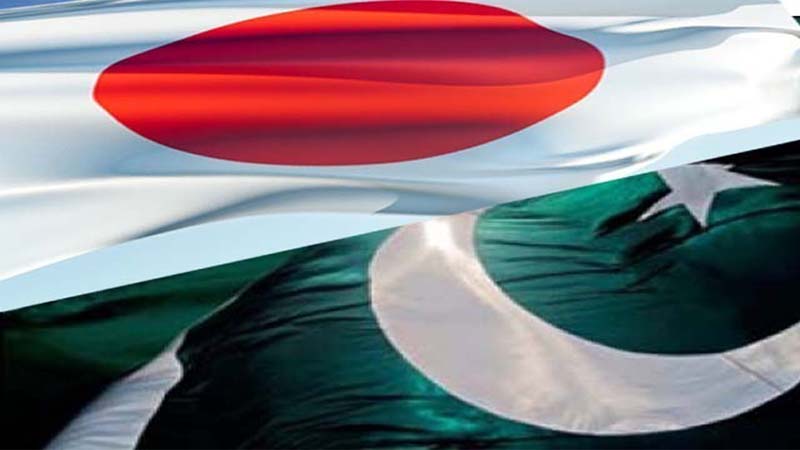
Pakistan invites Japan to assist in promoting its textiles through PTA
January 18, 2018
Pakistan plans Rs10b research fund to boost cotton output
January 22, 2018Pakistan’s exports to the 28-member European Union (EU) posted a growth of nearly 6% in January-September 2017 on a year-on-year basis. This shows that the Generalised System of Preferences-Plus (GSP+) scheme largely failed to boost exports to the EU. Total export proceeds to these countries amounted to €5.07bn during the period under review against €4.79bn a year ago, according to EU official data.
Latest figures show an upward movement compared to the similar period in the preceding calendar year. Annual growth recorded in January-September 2016 was just 3.5pc.
The GSP+ scheme became effective on January1, 2014 and will remain available for the next 10 years.
A product-wise analysis shows large variations. For example, exports of garments and hosiery witnessed a growth of 90.9% to €2.05bn during the period under review. The second biggest export category was home textiles, which grew 72.4% to €1.3bn. The share of these two products stood at 65% in January-September against 37.6% a year ago. The third biggest export category was cotton and intermediary goods of textiles, which increased 16.4% to €640.9mn.
Exports of the articles of leather increased 6% to €254.7m while the rise in rice exports was 11.6% to €109.6mn. Exports of sports goods (footballs) rose 41.8% to €102.7mn while foreign sales of surgical goods grew 22.4% to €58.1mn. There was a 21.1% increase in footwear exports to $58.1mn during the period under review.
Products that generated less than €40mn of export proceeds in January-September include plastics, minerals, machinery, carpets and cutlery. Exports of chemicals, articles of rubber and pharmaceuticals remained less than €10mn.
Country-wise data shows that the highest growth of 37.8% came from the UK as its imports from Pakistan surged to €1.02bn during the period under review. Exports to Germany were up 39% to €995.4mn. Both the UK and Germany have emerged as major export destinations for Pakistani goods under the GSP+ scheme.
The increase in exports to the UK is an encouraging factor. However, exporters fear they will lose the UK market following Brexit. London, however, has assured Islamabad of no change in the post-Brexit scenario.
The third biggest market for Pakistan’s exports is Spain. Exports to Spain went up 99.9% to €663.9mn. Spain was not the third biggest export destination until recently. It became Pakistan’s leading trading partner within the EU in the past couple of years owing to its extensive marketing strategy.
Pakistan’s exports to Italy increased 34.15% to €490.9mn. Exports to the Netherlands went up 56.1% to €480.6mn and those to France rose 24.9% to €353.9mn.
Exports to Belgium increased by 22.7% to €296.9mn, Poland by 121.9% to €112.9mn, Sweden by 46.4% to €111.48mn, Denmark by 81.7% to €103.95mn, Portugal by 22.7% to €86.4mn and the Czech Republic by 98% to €63.6mn.
Export proceeds to the remaining 17 EU countries were far less than €60mn in terms of value. However, the increase in exports to all countries was in double digits in percentage terms.
Pakistan’s exports to Austria increased by 64.8% to €54.05mn, Ireland by 34.6% to €44.7mn, Greece by 47% to €44.13mn, Slovenia by 116.7% to €17.73mn, Romania by 19.86% to €14.81mn, Bulgaria by 82.04% to €14.2mn, Hungary by 98% to €11.7mn, Croatia by 5.2% to €10.4mn, Estonia by 1.02% to €7.46mn, Cyprus by 145% to €4.3mn, Latvia by 41.3% to €3.9mn, Malta by 35% to €2.16mn and Luxemburg by 95.9% to €0.17mn.
Exports to Slovakia declined 6.2% to €14.03mn and those to Lithuania dropped 3.7% to €13.4mn.
Source: www.gulf-times.com




13 Comments
purchase androxal price new zealand
cheap androxal price netherlands
purchase enclomiphene buy san francisco
get enclomiphene cheap from usa
rifaximin ed drug
buying rifaximin cheap online canada
how to order xifaxan buy in the uk
how to order xifaxan new york city
buying staxyn uk generic
discount staxyn generic south africa
order avodart cheap where
avodart best price
cheap dutasteride usa mastercard
order dutasteride lowest price
ordering flexeril cyclobenzaprine cheap online pharmacy
buy flexeril cyclobenzaprine cheap from usa
buying gabapentin australia buy online
how to order gabapentin canada with no prescription
buy fildena generic online uk
online order fildena purchase in australia
does generic itraconazole from canada work
buy itraconazole cheap europe
kde kamagra austrálie
comprar kamagra generika
générique kamagra livraison express
est-il illégal de commander kamagra en ligne